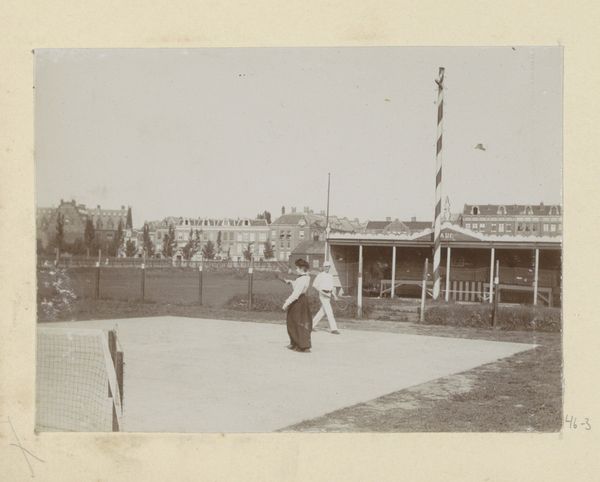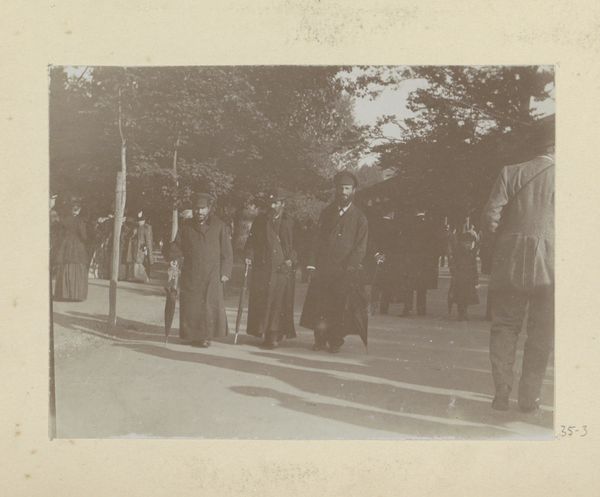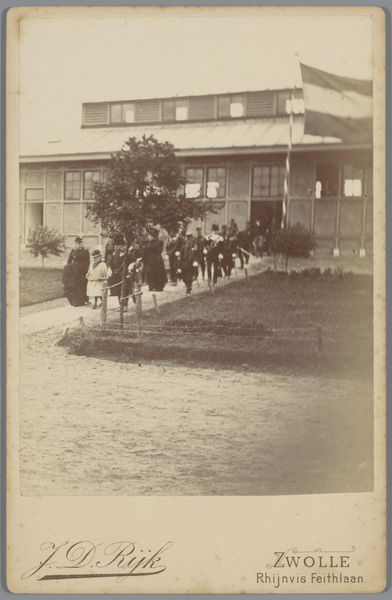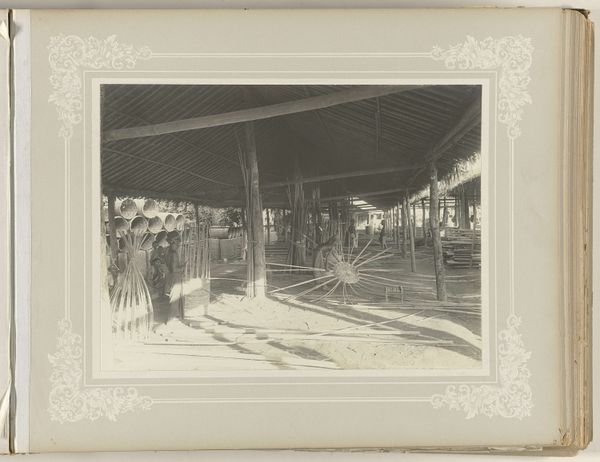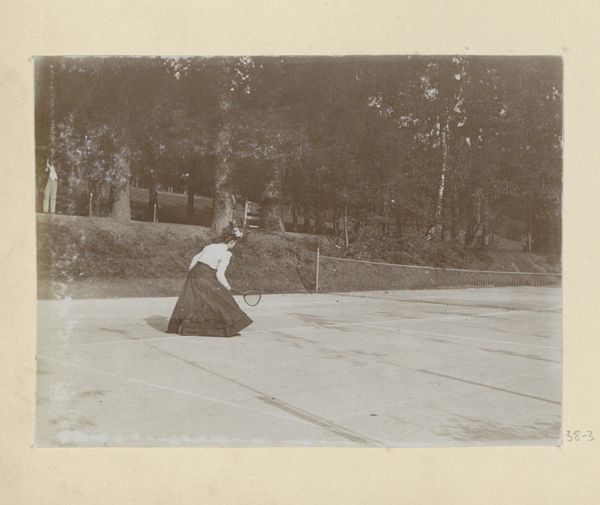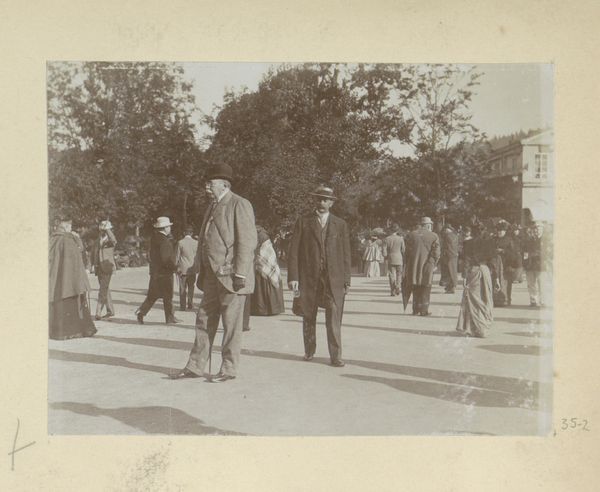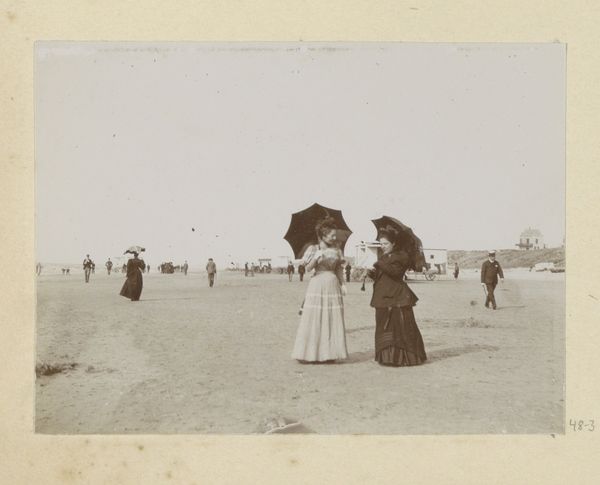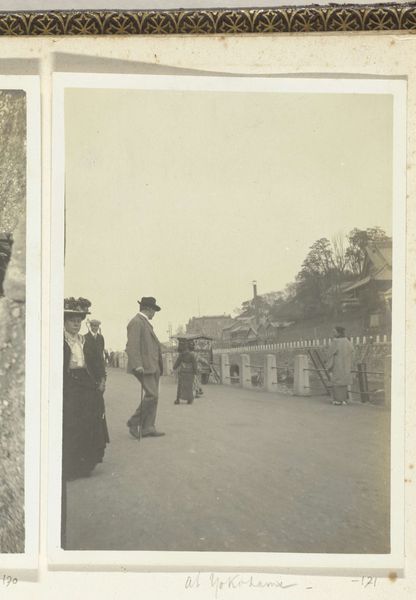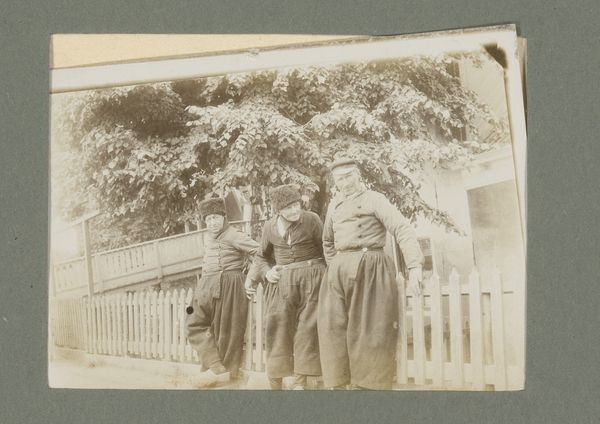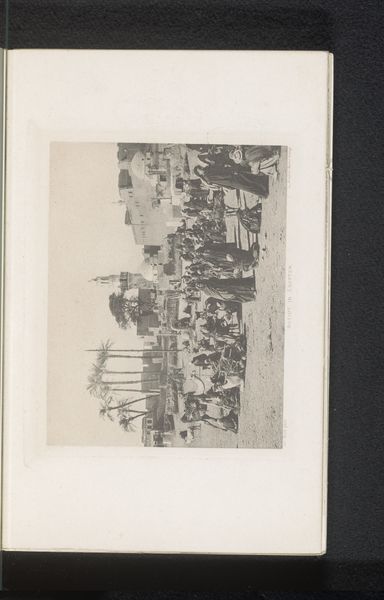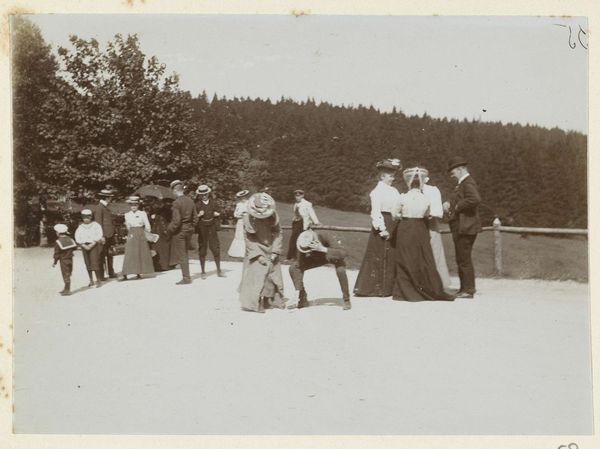
#
photo of handprinted image
#
aged paper
#
light pencil work
#
pastel soft colours
#
muted colour palette
#
photo restoration
#
light coloured
#
archive photography
#
historical photography
#
soft colour palette
Dimensions: height 80 mm, width 109 mm
Copyright: Rijks Museum: Open Domain
Curator: This sepia-toned photograph, titled "Man en vrouwen spelen dubbelspel op een tennisbaan," is attributed to Hendrik Herman van den Berg and dates from before 1894. It presents a fascinating glimpse into leisure activities of the period. Editor: It has such a dreamlike quality, doesn't it? The soft focus and muted palette almost make it seem like a faded memory. You can practically feel the sun on the court. Curator: Exactly. And the composition itself is interesting. Notice the stark geometry of the tennis court contrasting with the more organic shapes of the figures and surrounding landscape. Consider the hand-printing process used in that time period, using the available tools and resources. The tones could have varied in production. Editor: Yes, it’s a very constructed image in some respects. I find myself wondering about the social dynamics at play here. Tennis was becoming increasingly popular among the upper classes at this time, and photographs such as this document those recreational spaces of bourgeois life. The presence of women in sport starts to transform society's norms. Curator: I think it's also important to consider the material reality of the image itself. This isn’t just a snapshot; it’s an object, a hand-printed artifact with its own unique history of creation and distribution. How that labor informs meaning in the image for its maker, then and now. Editor: True, and seeing as its origin can be considered within early sports and social photography, we can explore what photography contributes to the changing landscape of recreation, class and public spectacle during that period. I also notice some handwriting at the bottom of the image that provides the details of who the photographer and subject were, highlighting how early archiving systems help shape the narrative of these pieces. Curator: And that patina of age is also quite telling. The light pencil work highlights the historical period the photographer was trying to capture with the limitations of photo printing during this era. The soft colours enhance its delicate composition which speaks to us in new ways today. Editor: Absolutely, examining pieces such as this allows us to further reflect on the changing face of public life during that period in society's view. Curator: It gives us insight into that intersection between technological developments and changing social mores in the public space, indeed.
Comments
No comments
Be the first to comment and join the conversation on the ultimate creative platform.
